Previous issues
- Page Path
- HOME > Browse Articles > Previous issues
- [English]
- Advanced PM Processes for Medical Technologies
- Frank Petzoldt, Vera Friederici, Philipp Imgrund, Claus Aumund-Kopp
- J Korean Powder Metall Inst. 2014;21(1):1-6. Published online February 1, 2014
- DOI: https://doi.org/10.4150/KPMI.2014.21.1.1
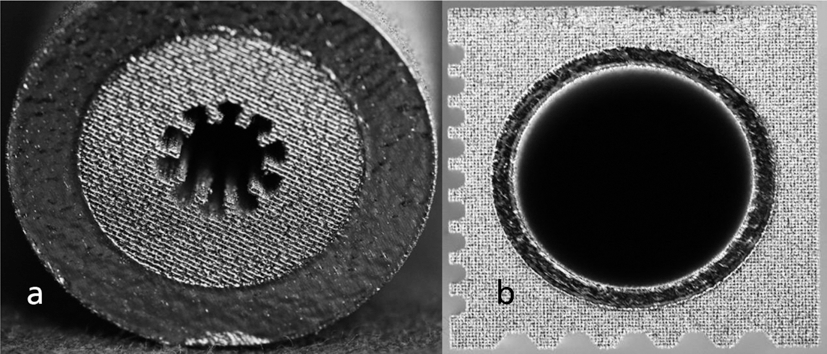
- 819 View
- 5 Download
- 2 Citations
-
 Abstract
Abstract
 PDF
PDF Medical technologies are gaining in importance because of scientific and technical progress in medicine and the increasing average lifetime of people. This has opened up a huge market for medical devices, where complex-shaped metallic parts made from biocompatible materials are in great demand. Today many of these components are already being manufactured by powder metallurgy technologies. This includes mass production of standard products and also customized components. In this paper some aspects related to metal injection molding of Ti and its alloys as well as modifications of microstructure and surface finish were discussed. The process chain of additive manufacturing (AM) was described and the current state of the art of AM processes like Selective Laser Melting and electron beam melting for medical applications was presented.
-
Citations
Citations to this article as recorded by- Enhancing corrosion resistance of Ti-based amorphous alloy powders via misch metal addition
Yeon Joo Lee, Hyokyung Sung, Jae Bok Seol, Kisub Cho, Hwi Jun Kim, Hyunjoo Choi
Powder Metallurgy.2025; 68(3): 230. CrossRef - Spontaneous Formation of Titanium Nitride on the Surface of a Ti Rod Induced by Electro-Discharge-Heat-Treatment in an N2 Atmosphere
W.H. Lee, Y.H. Yoon, Y.H. Kim, Y.K. Lee, J.Y. Kim, S.Y. Chang
Archives of Metallurgy and Materials.2017; 62(2): 1281. CrossRef
- Enhancing corrosion resistance of Ti-based amorphous alloy powders via misch metal addition
- [English]
- Densification Behavior of Rhenium Alloy using Master Sintering Curve
- Dong Yong Park, Yong Jun Oh, Young Sam Kwon, Seong Taek Lim, Seong Jin Park
- J Korean Powder Metall Inst. 2014;21(1):7-15. Published online February 1, 2014
- DOI: https://doi.org/10.4150/KPMI.2014.21.1.7
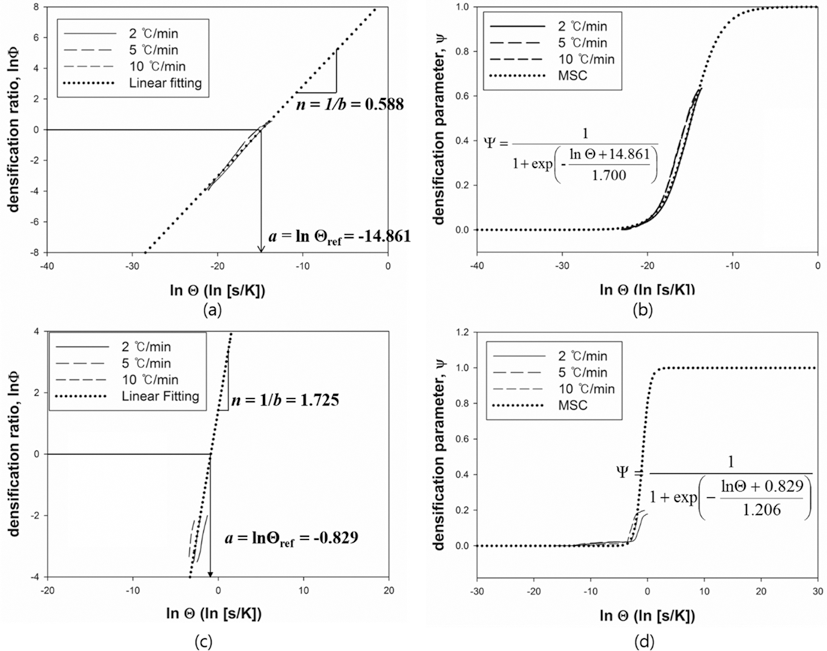
- 825 View
- 2 Download
- 1 Citations
-
 Abstract
Abstract
 PDF
PDF This study investigated the densification behavior of rhenium alloys including W-25 wt.%Re and Re-2W- 1Ta (pure Re) during sintering. The dilatometry experiments were carried out to obtain the
in-situ shrinkage in H2 atmosphere. The measured data was analyzed through shrinkage, strain rate and relative density, and then symmetrically treated to construct the linearized form of master sintering curve (MSC) and MSC as a well-known and straightforward approach to describe the densification behavior during sintering. The densification behaviors for each material were analyzed in many respects including apparent activation energy, densification parameter, and densification ratio. MSC with a minimal set of preliminary experiments can make the densification behavior to be characterized and predicted as well as provide guideline to sinter cycle design. Considering the results of linearized form and MSC, it was confirmed that the W-25 wt.%Re compared to Pure Re is more easily densified at the relatively low temperature.-
Citations
Citations to this article as recorded by- The influence of sintering time on the microstructural properties of chromium-rhenium matrix composites
Marcin Chmielewski, Szymon Nosewicz, Dorota Jakubowska, Małgorzata Lewandowska, Jarosław Mizera, Jerzy Rojek, Piotr Bazarnik
International Journal of Refractory Metals and Hard Materials.2016; 59: 78. CrossRef
- The influence of sintering time on the microstructural properties of chromium-rhenium matrix composites
- [Korean]
- Synthesis and Antifungal Property of Porous Al2O3 with Dispersions of Cu Nanoparticles
- Ho-Suk Yoo, Min-Sung Kim, Sung-Tag Oh, Chang-Yong Hyun
- J Korean Powder Metall Inst. 2014;21(1):16-20. Published online February 1, 2014
- DOI: https://doi.org/10.4150/KPMI.2014.21.1.16
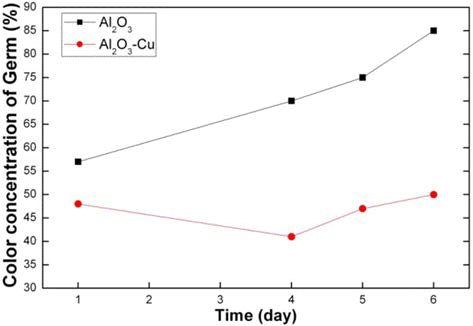
- 806 View
- 1 Download
- 2 Citations
-
 Abstract
Abstract
 PDF
PDF In order to fabricate the porous Al2O3 with dispersion of nano-sized Cu particles, freeze-drying of camphene/ Al2O3 slurry and solution chemistry process using Cu-nitrate are introduced. Camphene slurries with 10 vol% Al2O3 was frozen at -25°C. Pores were generated by sublimation of the camphene during drying in air. The sintered samples at 1400 and 1500°C showed the same size of large pores which were aligned parallel to the sublimable vehicles growth direction. However, the size of fine pores in the internal walls of large pores decreased with increase in sintering temperature. It was shown that Cu particles with the size of 100 nm were homogeneously dispersed on the surfaces of the large pores. Antibacterial test using fungus revealed that the porous Al2O3/1 vol% Cu composite showed antifungal property due to the dispersion of Cu particles. The results are suggested that the porous composites with required pore characteristics and functional property can be fabricated by freeze-drying process and addition of functional nano particles by chemical method.
-
Citations
Citations to this article as recorded by- Collection of Industrial Oil Using Nanoparticles and Porous Powders of Silica
Y.-S. Cho, J.-W. Moon
Archives of Metallurgy and Materials.2017; 62(2): 1371. CrossRef - Fabrication and Mechanical Properties of STS316L Porous Metal for Vacuum Injection Mold
Se Hoon Kim, Sang Min Kim, Sang Ho Noh, Jin Pyeong Kim, Jae Hyuck Shin, Si-Young Sung, Jin Kwang Jin, Taean Kim
Journal of Korean Powder Metallurgy Institute.2015; 22(3): 197. CrossRef
- Collection of Industrial Oil Using Nanoparticles and Porous Powders of Silica
- [Korean]
- Characterization of the Silica Coated Diatomite Based Ceramic Filter for Water Treatment
- Byung-Seo Bae, Jang-Hoon Ha, In-Hyuck Song, Yoo-Dong Hahn
- J Korean Powder Metall Inst. 2014;21(1):21-27. Published online February 1, 2014
- DOI: https://doi.org/10.4150/KPMI.2014.21.1.21

- 433 View
- 2 Download
-
 Abstract
Abstract
 PDF
PDF In this study, diatomite based materials were investigated as a support filter for silica particle coating. The silica sol for coating was synthesized by a stöber process. The diatomite support was dry-pressed at 10 MPa and sintered at 1200°C for 1 hour. The coating sol was prepared as a mixture of EtOH and silica sol. The diatomite support was coated by a dip-coating process. Silica coated diatomite filter was sintered at 1000~1200°C for 1 hour. The largest pore size was decreased with increasing concentration ratio of coating sol. The gas and water permeability of silica coated diatomite decreased with increasing of concentration ratio of the coating sol.
- [Korean]
- Study on Surface Modification of Ti Substrate to Improve the Dispersion of Catalytic Metals on Synthesis of Carbon Nanotubes
- Seoung Yeol Kwak, Ho Gyu Kim, Jong Min Byun, Ju Hyuk Park, Myung-Jin Suk, Sung-Tag Oh, Young Do Kim
- J Korean Powder Metall Inst. 2014;21(1):28-33. Published online February 1, 2014
- DOI: https://doi.org/10.4150/KPMI.2014.21.1.28
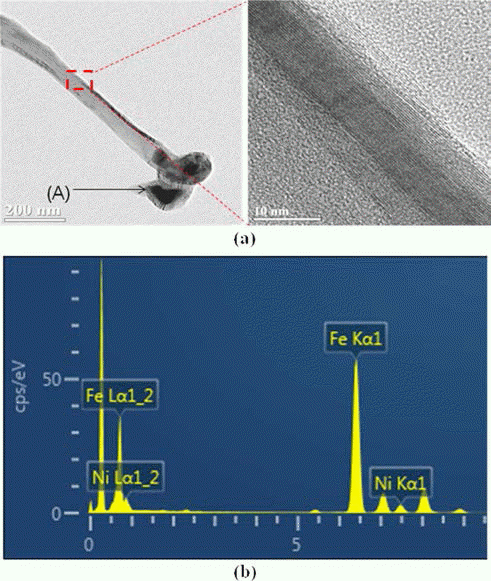
- 631 View
- 0 Download
- 4 Citations
-
 Abstract
Abstract
 PDF
PDF This paper describes the surface modification effect of a Ti substrate for improved dispersibility of the catalytic metal. Etching of a pure titanium substrate was conducted in 50% H2SO4, 50°C for 1 h-12 h to observe the surface roughness as a function of the etching time. At 1 h, the grain boundaries were obvious and the crystal grains were distinguishable. The grain surface showed micro-porosities owing to the formation of micro-pits less than 1 μm in diameter. The depths of the grain boundary and micro-pits appear to increase with etching time. After synthesizing the catalytic metal and growing the carbon nano tube (CNT) on Ti substrate with varying surface roughness, the distribution trends of the catalytic metal and grown CNT on Ti substrate are discussed from a micro-structural perspective.
-
Citations
Citations to this article as recorded by- Solvent induced surface modifications on hydrogen storage performance of ZnO nanoparticle decorated MWCNTs
Madhavi Konni, Anima S. Dadhich, Saratchandra Babu Mukkamala
Sustainable Energy & Fuels.2018; 2(2): 466. CrossRef - Influence of nickel nanoparticles on hydrogen storage behaviors of MWCNTs
Ye-Ji Han, Soo-Jin Park
Applied Surface Science.2017; 415: 85. CrossRef - Spontaneous Formation of Titanium Nitride on the Surface of a Ti Rod Induced by Electro-Discharge-Heat-Treatment in an N2 Atmosphere
W.H. Lee, Y.H. Yoon, Y.H. Kim, Y.K. Lee, J.Y. Kim, S.Y. Chang
Archives of Metallurgy and Materials.2017; 62(2): 1281. CrossRef - Synthesis of CNT on a Camphene Impregnated Titanium Porous Body by Thermal Chemical Vapor Deposition
Hogyu Kim, Hye Rim Choi, Jong Min Byun, Myung-Jin Suk, Sung-Tag Oh, Young Do Kim
Journal of Korean Powder Metallurgy Institute.2015; 22(2): 122. CrossRef
- Solvent induced surface modifications on hydrogen storage performance of ZnO nanoparticle decorated MWCNTs
- [Korean]
- Fabrication of Porous Cu-Ni by Freeze Drying and Hydrogen Reduction of CuO-NiO Powder Mixture
- Han Gil Seo, Sung-Tag Oh
- J Korean Powder Metall Inst. 2014;21(1):34-38. Published online February 1, 2014
- DOI: https://doi.org/10.4150/KPMI.2014.21.1.34

- 691 View
- 0 Download
- 3 Citations
-
 Abstract
Abstract
 PDF
PDF Cu-Ni alloys with unidirectionally aligned pores were prepared by freeze-drying process of CuO-NiO/camphene slurry. Camphene slurries with dispersion stability by the addition of oligomeric polyester were frozen at -25°C, and pores in the frozen specimens were generated by sublimation of the camphene during drying in air. The green bodies were hydrogen-reduced at 300°C and sintered at 850°C for 1 h. X-ray diffraction analysis revealed that CuO-NiO composite powders were completely converted to Cu-Ni alloy without any reaction phases by hydrogen reduction. The sintered samples showed large and aligned parallel pores to the camphene growth direction, and small pores in the internal wall of large pores. The pore size and porosity decreased with increase in CuO-NiO content from 5 to 10 vol%. The change of pore characteristics was explained by the degree of powder rearrangement in slurry and the accumulation behavior of powders in the interdendritic spaces of solidified camphene.
-
Citations
Citations to this article as recorded by- Enhancement in electrical conductivity of pastes containing submicron Ag-coated Cu filler with palmitic acid surface modification
Eun Byeol Choi, Jong-Hyun Lee
Applied Surface Science.2017; 415: 67. CrossRef - Investigation for Microstructure and Hardness of Welded Zone of Cu-Ni Alloy using W92-Ni-Fe Sintering Tool
Tae-Jin Yoon, Sang-Won Park, Myung-Chang Kang, Joong-Suk Noh, Sung-Wook Chung, Chung-Yun Kang
Journal of Korean Powder Metallurgy Institute.2015; 22(3): 181. CrossRef - Controlling Structural and Electrical Properties of Pt Nanopowder-Dispersed SiO2Film
Jae Ho Lee, In Joo Shin, Sung Woo Lee, Hyeong Cheol Kim, Byung Joon Choi
Journal of Korean Powder Metallurgy Institute.2014; 21(5): 355. CrossRef
- Enhancement in electrical conductivity of pastes containing submicron Ag-coated Cu filler with palmitic acid surface modification
- [Korean]
- Planar Shock Wave Compaction of Oxidized Copper Nano Powders using High Speed Collision and Its Mechanical Properties
- Dong-Hyun Ahn, Wooyeol Kim, Lee Ju Park, Hyoung Seop Kim
- J Korean Powder Metall Inst. 2014;21(1):39-43. Published online February 1, 2014
- DOI: https://doi.org/10.4150/KPMI.2014.21.1.39
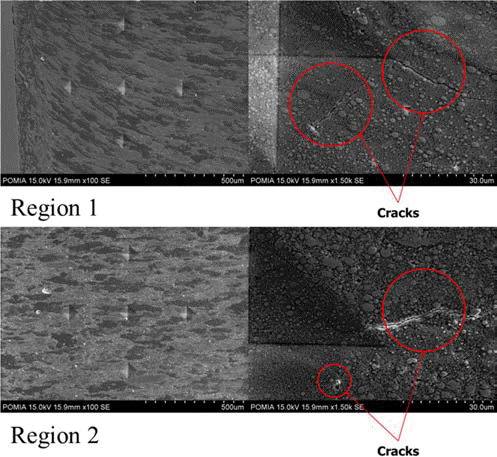
- 679 View
- 1 Download
- 2 Citations
-
 Abstract
Abstract
 PDF
PDF Bulk nanostructured copper was fabricated by a shock compaction method using the planar shock wave generated by a single gas gun system. Nano sized powders, average diameter of 100 nm, were compacted into the capsule and target die, which were designed to eliminate the effect of undesired shock wave, and then impacted with an aluminum alloy target at 400 m/s. Microstructure and mechanical properties of the shock compact specimen were analyzed using an optical microscope (OM), scanning electron microscope (SEM), and micro indentation. Hardness results showed low values (approximately 45~80 Hv) similar or slightly higher than those of conventional coarse grained commercial purity copper. This result indicates the poor quality of bonding between particles. Images from OM and SEM also confirmed that no strong bonding was achieved between them due to the insufficient energy and surface oxygen layer of the powders.
-
Citations
Citations to this article as recorded by- Compressibility of hierarchic-architectured agglomerates of hydrogen-reduced copper nanopowders
Dong-Hyun Ahn, Wooyeol Kim, Eun Yoo Yoon, Hyoung Seop Kim
Journal of Materials Science.2016; 51(1): 82. CrossRef - Analysis of the Change in Microstructures of Nano Copper Powders During the Hydrogen Reduction using X-ray Diffraction Patterns and Transmission Electron Microscope, and the Mechanical Property of Compacted Powders
Dong-Hyun Ahn, Dong Jun Lee, Wooyeol Kim, Lee Ju Park, Hyoung Seop Kim
Journal of Korean Powder Metallurgy Institute.2014; 21(3): 207. CrossRef
- Compressibility of hierarchic-architectured agglomerates of hydrogen-reduced copper nanopowders
- [Korean]
- Manufacturing and Evaluation of Properties of Nanocrystalline Ni bulk by Dynamic Compaction of Nano Ni powders using a Gas-gun System
- Wooyeol Kim, Dong-Hyun Ahn, Lee Ju Park, Jong-Il Park, Hyoung Seop Kim
- J Korean Powder Metall Inst. 2014;21(1):44-49. Published online February 1, 2014
- DOI: https://doi.org/10.4150/KPMI.2014.21.1.44
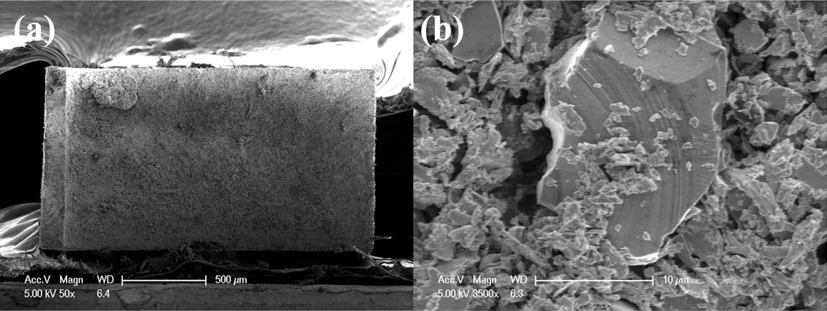
- 512 View
- 0 Download
-
 Abstract
Abstract
 PDF
PDF In this study, nanocrystalline nickel powders were cold compacted by a dynamic compaction method using a single-stage gas gun system. A bending test was conducted to measure the bonding strengths of the compacted regions and microstructures of the specimen were analyzed using a scanning electron microscopy. The specimen was separated into two parts by a horizontal crack after compaction. Density test shows that the powder compaction occurred only in the upper part of the specimen. Brittle fracture was occurred during the bending test of the compact sample. Dispersion of shock energy due to spalling highly affected the bonding status of the nanocrystalline nickel powder.
- [Korean]
- Fabrication and Evaluation of Carbon Nanotube Reinforced Al Matrix Composite by a Powder-in-sheath Rolling Method
- Seong-Hee Lee, Dongmin Hong
- J Korean Powder Metall Inst. 2014;21(1):50-54. Published online February 1, 2014
- DOI: https://doi.org/10.4150/KPMI.2014.21.1.50
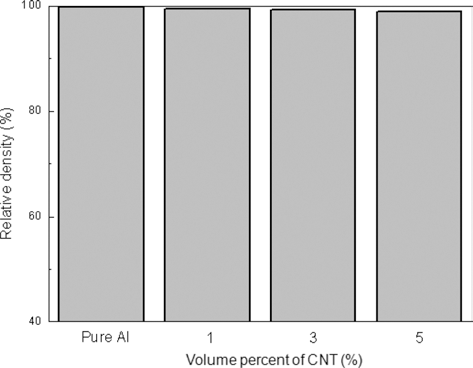
- 667 View
- 0 Download
- 5 Citations
-
 Abstract
Abstract
 PDF
PDF A powder-in-sheath rolling method was applied to a fabrication of a carbon nano tube (CNT) reinforced aluminum composite. A STS304 tube with an outer diameter of 34 mm and a wall thickness of 2 mm was used as a sheath material. A mixture of pure aluminum powders and CNTs with the volume contents of 1, 3, 5 vol was filled in the tube by tap filling and then processed to 73.5% height reduction by a rolling mill. The relative density of the CNT/ Al composite fabricated by the powder-in-sheath rolling decreased slightly with increasing of CNTs content, but exhibited high value more than 98. The grain size of the aluminum matrix was largely decreased with addition of CNTs; it decreased from 24 μm to 0.9 μm by the addition of only 1 volCNT. The average hardness of the composites increased by approximately 3 times with the addition of CNTs, comparing to that of unreinforced pure aluminum. It is concluded that the powder-in-sheath rolling method is an effective process for fabrication of CNT reinforced Al matrix composites.
-
Citations
Citations to this article as recorded by- Torsion Property of the Structure Bonded Aluminum Foam Due to Impact
G.W. Hwang, J.U. Cho
Archives of Metallurgy and Materials.2017; 62(2): 1353. CrossRef - A Fatigue Fracture Study on TDCB Aluminum Foam Specimen of Type Mode III Bonded with Adhesive
J.H. Lee, J.U. Cho
Archives of Metallurgy and Materials.2017; 62(2): 1359. CrossRef - Experimental Study On Fracture Property Of Double Cantilever Beam Specimen With Aluminum Foam
Y.C. Kim, H.K. Choi, J.U. Cho
Archives of Metallurgy and Materials.2015; 60(2): 1151. CrossRef - Experimental Study On Fracture Property Of Tapered Double Cantilever Beam Specimen With Aluminum Foam
Y.C. Kim, S.S. Kim, J.U. Cho
Archives of Metallurgy and Materials.2015; 60(2): 1459. CrossRef - Microstructure and Mechanical Properties of CNT/Al Composite Fabricated by a Powder-in-Sheath Rolling Method utilizing Copper Tube as a Sheath
Seong-Hee Lee
Journal of Korean Powder Metallurgy Institute.2014; 21(5): 343. CrossRef
- Torsion Property of the Structure Bonded Aluminum Foam Due to Impact
- [Korean]
- Effect of Cell Size on the High Temperature Oxidation Properties of Fe-Cr-Al Powder Porous Metal Manufactured by Electro-spray Process
- Jae-Sung Oh, Young-Min Kong, Byoung-Kee Kim, Kee-Ahn Lee
- J Korean Powder Metall Inst. 2014;21(1):55-61. Published online February 1, 2014
- DOI: https://doi.org/10.4150/KPMI.2014.21.1.55

- 802 View
- 1 Download
- 3 Citations
-
 Abstract
Abstract
 PDF
PDF Fe-Cr-Al powder porous metal was manufactured by using new electro-spray process. First, ultra-fine fecralloy powders were produced by using the submerged electric wire explosion process. Evenly distributed colloid (0.05~0.5% powders) was dispersed on Polyurethane foam through the electro-spray process. And then degreasing and sintering processes were conduced. In order to examine the effect of cell size (200 μm, 450 μm, 500 μm) in process, pre-samples were sintered for two hours at temperature of 1450°C, in H2 atmospheres. A 24-hour thermo gravimetric analysis test was conducted at 1000°C in a 79% N2 + 21% O2 to investigate the high temperature oxidation behavior of powder porous metal. The results of the high temperature oxidation tests showed that oxidation resistance increased with increasing cell size. In the 200 μm porous metal with a thinner strut and larger specific surface area, the depletion of the stabilizing elements such as Al and Cr occurred more quickly during the high-temperature oxidation compared with the 450, 500 μm porous metals.
-
Citations
Citations to this article as recorded by- Fabrication and Mechanical Properties of Open‐Cell Austenitic Stainless Steel Foam by Electrostatic Powder Spraying Process
Tae-Hoon Kang, Kyu-Sik Kim, Jung-Yeul Yun, Min-Jeong Lee, Kee-Ahn Lee
Advanced Engineering Materials.2020;[Epub] CrossRef - Microstructure and High Temperature Oxidation Behaviors of Fe-Ni Alloys by Spark Plasma Sintering
Chae Hong Lim, Jong Seok Park, Sangsun Yang, Jung-Yeul Yun, Jin Kyu Lee
Journal of Korean Powder Metallurgy Institute.2017; 24(1): 53. CrossRef - Effect of Al2O3 Inter-Layer Grown on FeCrAl Alloy Foam to Improve the Dispersion and Stability of NiO Catalysts
유진 이, 본율 구, 성호 백, 만호 박, 효진 안
Korean Journal of Materials Research.2015; 25(8): 391~397. CrossRef
- Fabrication and Mechanical Properties of Open‐Cell Austenitic Stainless Steel Foam by Electrostatic Powder Spraying Process
- [Korean]
- Research Trend of Ceramic Filter for Water Treatment
- In-Hyuck Song, Jang-Hoon Ha, Byungseo Bae, Young-Jo Park, Jae-Woong Ko, Youn-Kyoung Baek, Young-Kuk Kim, Jung-Goo Lee, Yoo-Dong Hahn
- J Korean Powder Metall Inst. 2014;21(1):62-71. Published online February 1, 2014
- DOI: https://doi.org/10.4150/KPMI.2014.21.1.62

- 2,143 View
- 19 Download
- 4 Citations
-
 PDF
PDF -
Citations
Citations to this article as recorded by- Reactive ceramic pellets incorporated iron for removing As(III), As(V), and Cr(VI) from aqueous solutions
Sunwon Rha, Yun Sik Gong, Ho Young Jo
Desalination and Water Treatment.2019; 158: 174. CrossRef - Application of Physical and Chemical Enhanced Backwashing to Reduce Membrane Fouling in the Water Treatment Process Using Ceramic Membranes
Seogyeong Park, Joon-Seok Kang, Jeong Jun Lee, Thi-Kim-Quyen Vo, Han-Seung Kim
Membranes.2018; 8(4): 110. CrossRef - Effects of particle size and forming pressure on pore properties of Fe-Cr-Al porous metal by pressureless sintering
Bon-Uk Koo, Yujeong Yi, Minjeong Lee, Byoung-Kee Kim
Metals and Materials International.2017; 23(2): 336. CrossRef - Characterization and Microstructure of an Extruded Flat-Tubular-Type Alumina Filter
Byung-Seo Bae, Jang-Hoon Ha, In-Hyuck Song
Journal of the Korean Ceramic Society.2014; 51(5): 406. CrossRef
- Reactive ceramic pellets incorporated iron for removing As(III), As(V), and Cr(VI) from aqueous solutions
TOP
 KPMI
KPMI




 First
First Prev
Prev


